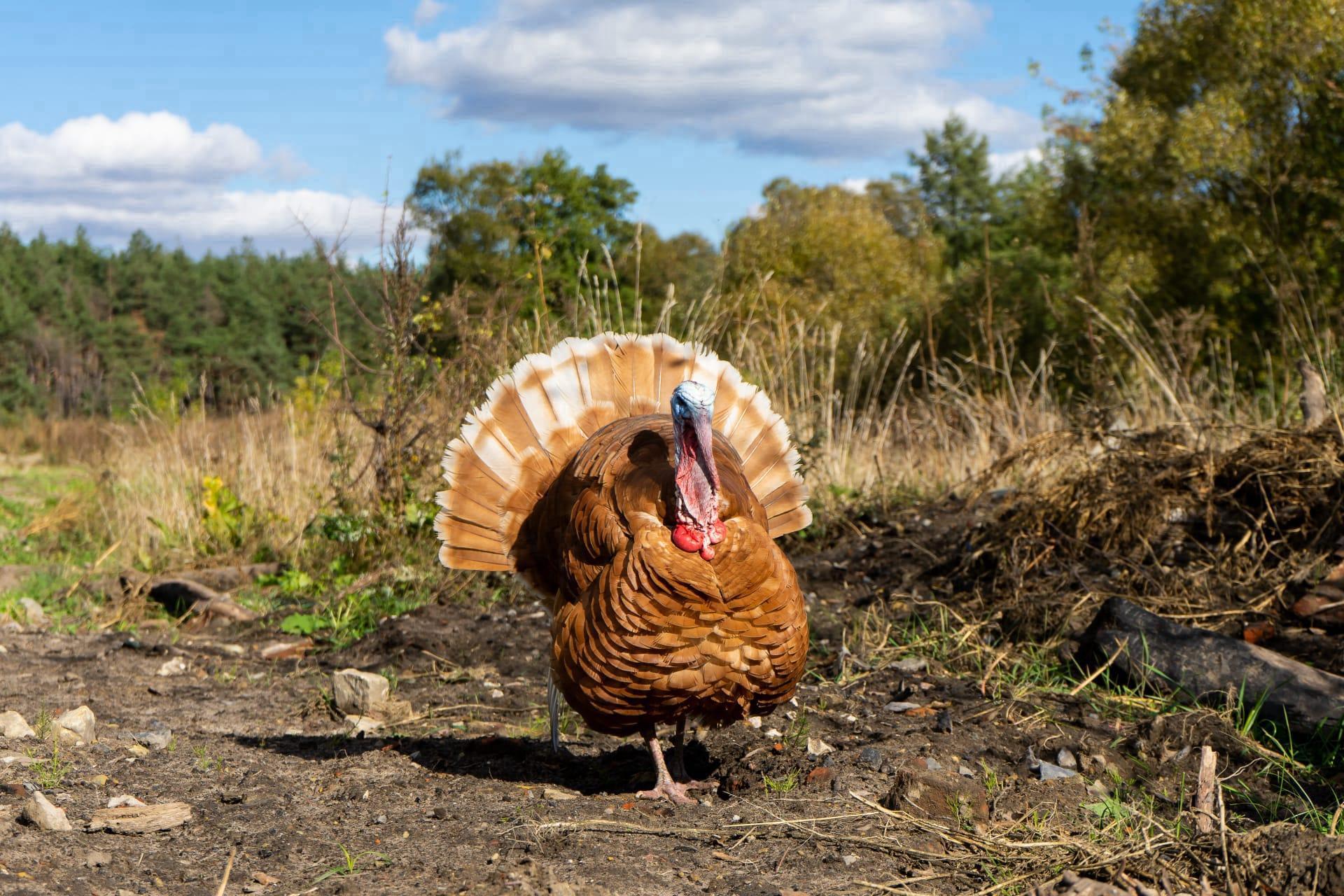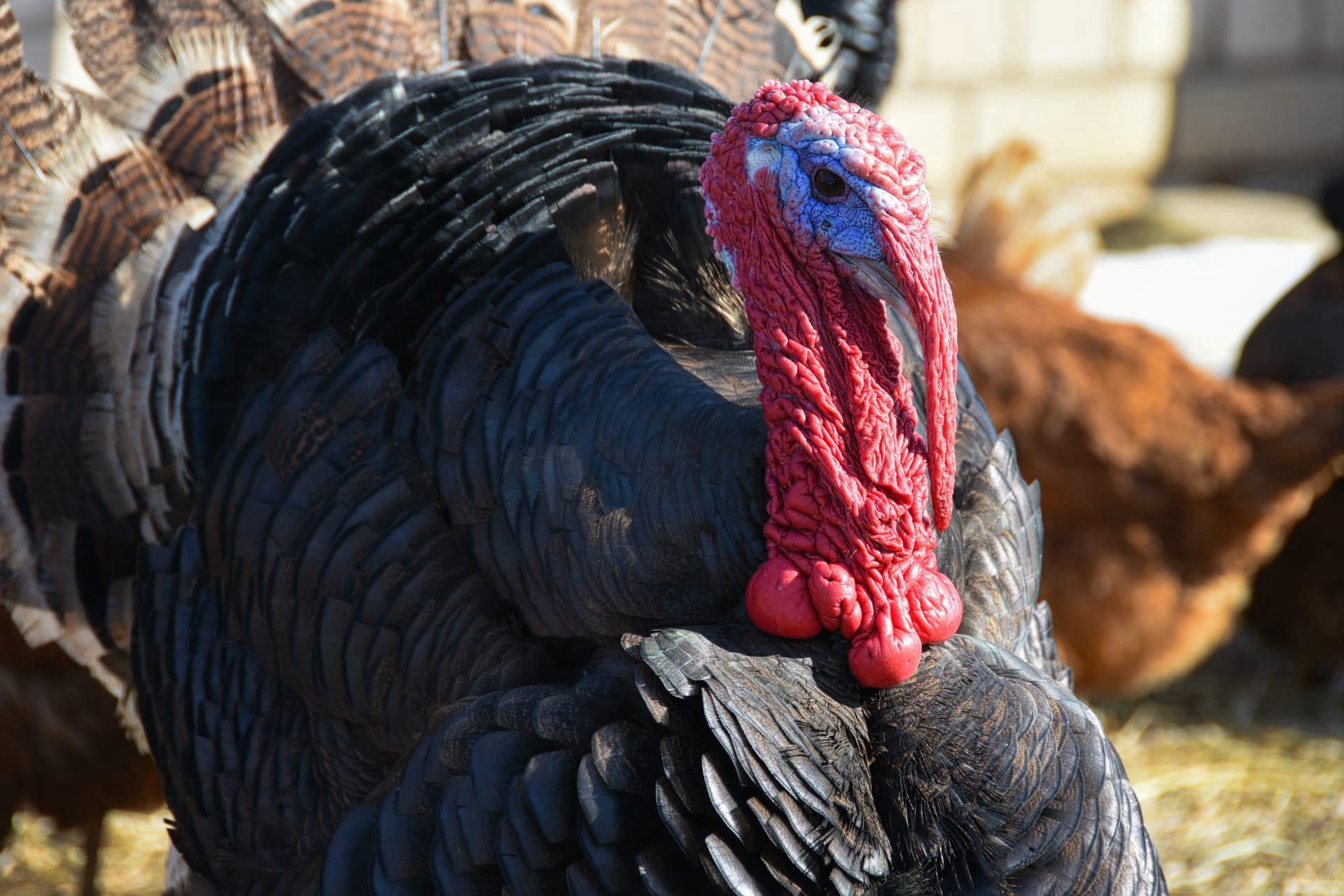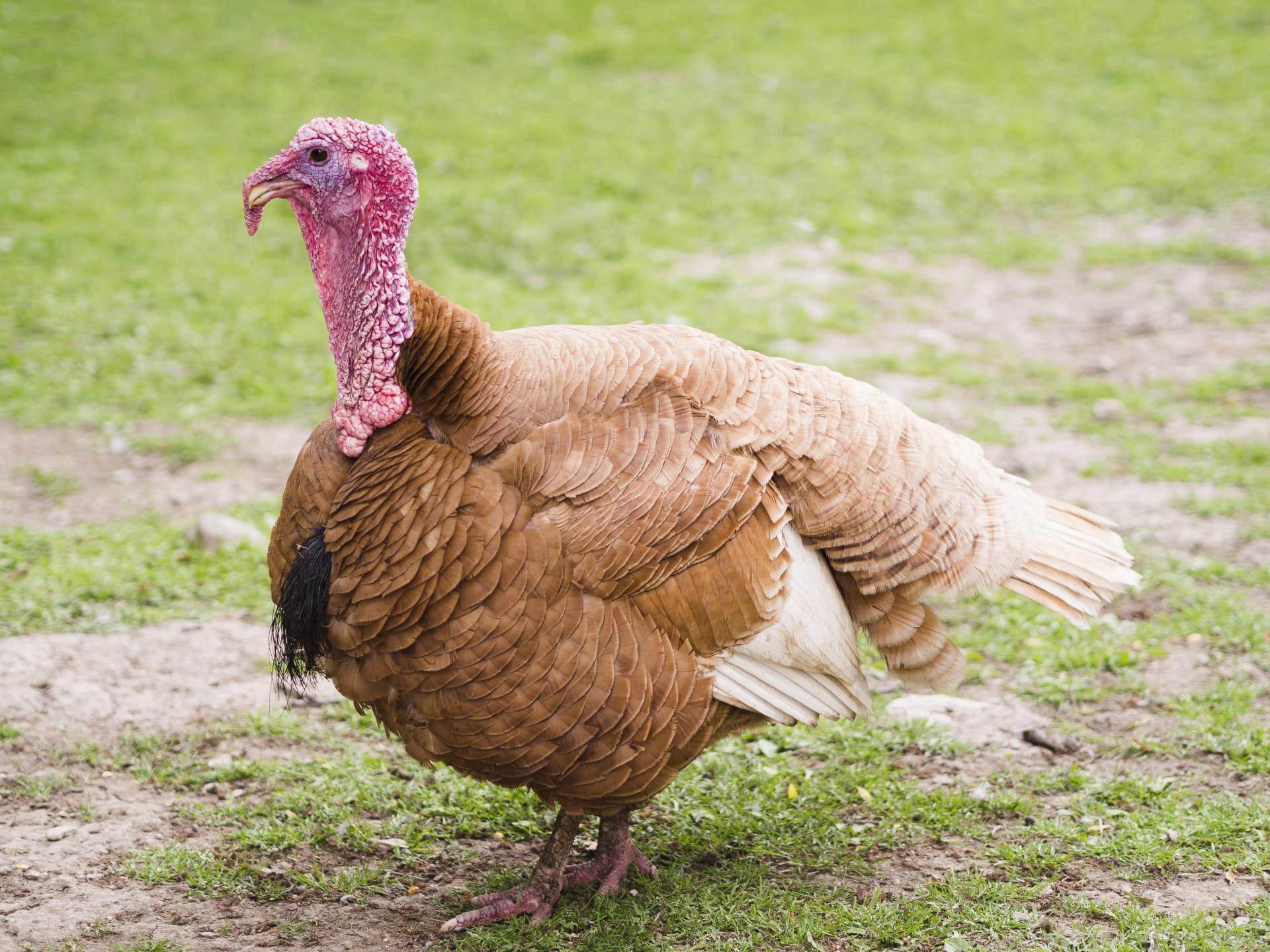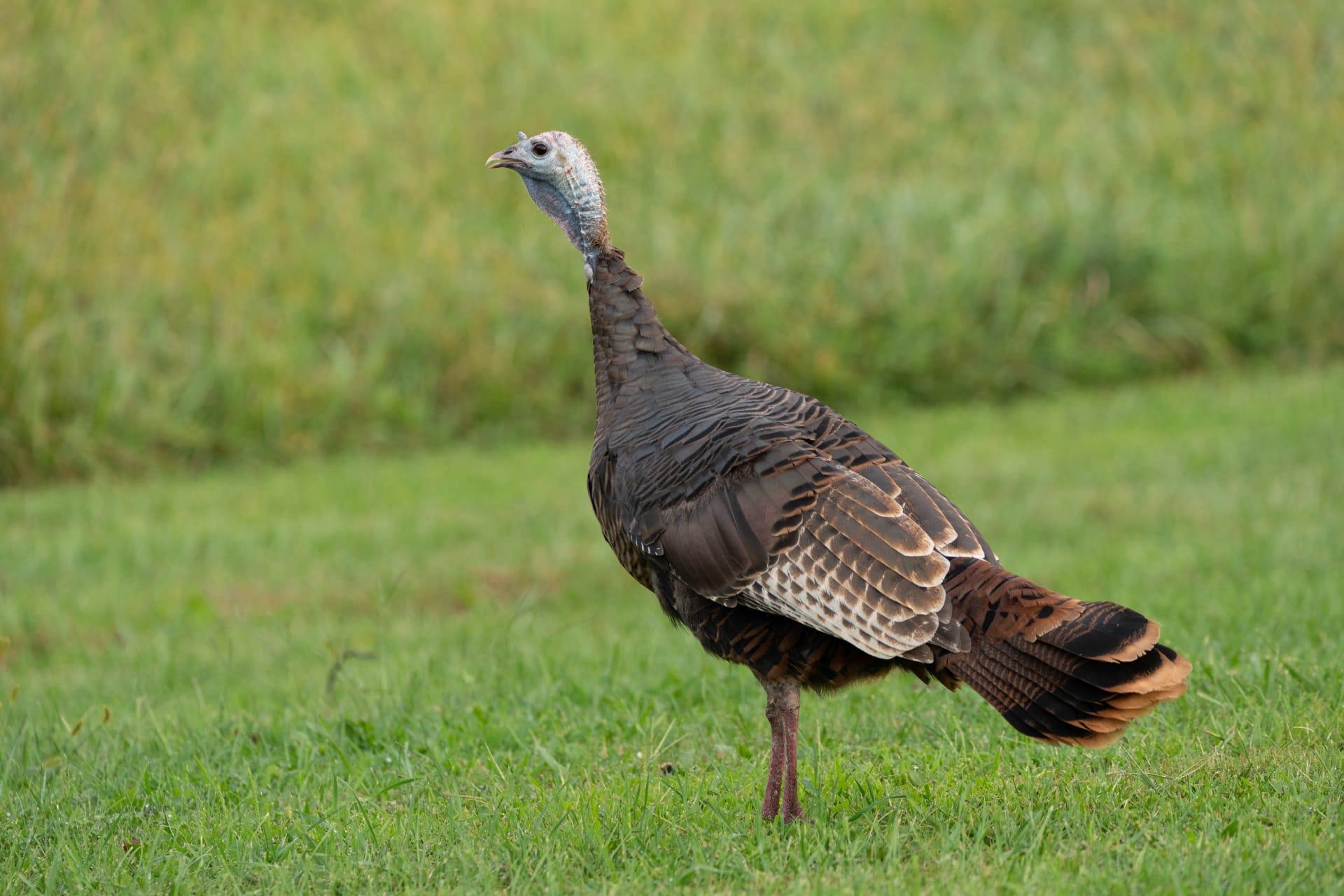1
Did you know that only male turkeys, known as toms, actually gobble? Females, called hens, make a clicking noise. The gobble of a tom is a powerful, resonant sound that can be heard up to a mile away. This unique call is a social signal to other turkeys and a way to attract females during breeding season.
Speaking of size, wild turkeys are quite athletic. They can run at speeds up to 20 miles per hour and fly for short distances up to 55 miles per hour. This is especially impressive considering adult male turkeys can weigh up to 24 pounds, with a wingspan reaching 4.9 feet. Their ability to rapidly take off is a key survival tactic to escape predators.

2
The color of a turkey's head and throat can change depending on its emotional state. When a turkey becomes excited or agitated, these areas can turn shades of red, blue, or white. This is due to blood vessel contraction and expansion under their skin, an amazing natural phenomenon reflecting their mood.
Another fascinating fact is about their eating habits. Turkeys are omnivores and have a unique eating ability – they can swallow food whole. Thanks to a part in their throat called the esophagus, they can store unchewed food. Later, this food moves to the gizzard, a powerful muscle that grinds the food down. This system allows turkeys to quickly eat large amounts of food, an advantageous adaptation for survival.

3
Did you know that turkeys have excellent vision? Their eyes are located on the sides of their heads, giving them a wide field of vision of about 270 degrees. This panoramic view allows them to see predators from various angles. Moreover, turkeys have periscopic vision; they can see objects that are not in their direct line of sight, an incredible asset in the wild.
Another curious aspect is their roosting behavior. Wild turkeys roost in trees at night, which may seem surprising given their size. This behavior helps protect them from ground predators. They prefer tall, strong trees and will often return to the same roosting spot repeatedly if it's safe and undisturbed.

4
Turkeys have a unique social structure. In the wild, they form strong social bonds and can recognize each other by their unique calls. This social behavior is crucial for their survival, as they rely on the flock for protection and locating food. Their social hierarchy, known as the "pecking order," determines everything from feeding to roosting positions.
The snood, a fleshy protuberance on the forehead of turkeys, plays a role in courtship. In males, the snood becomes engorged and changes color to a brighter red during mating displays to attract females. The longer and more colorful the snood, the more attractive the male is to the female, making it a key feature in turkey communication and mating rituals.

5
Turkeys have an impressive memory, especially when it comes to geography. They are known to remember detailed features of their habitat over an area as large as 1,000 acres. This spatial memory helps them to locate food sources, water, and safe roosting sites, which is vital for their survival in the wild.
Benjamin Franklin once praised the turkey as a bird of courage and wanted it to be the national bird of the United States, instead of the bald eagle. He admired the turkey for its native American origin and considered it a more respectable bird than the bald eagle, which he thought of as a bird of bad moral character. This historical tidbit highlights the turkey's unique place in American culture and history.